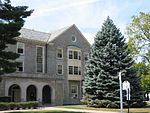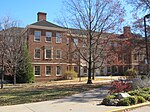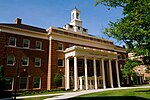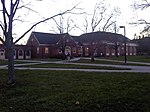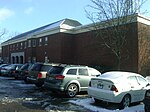Langstroth Cottage
Buildings and structures of Miami UniversityFormer houses in OhioHouses completed in 1856Houses in Butler County, OhioHouses on the National Register of Historic Places in Ohio ... and 3 more
National Historic Landmarks in OhioNational Register of Historic Places in Butler County, OhioUse mdy dates from August 2023

Langstroth Cottage is a historic building on the Western College campus of Miami University in Oxford, Ohio. It was designated a National Historic Landmark on June 22, 1976. The cottage, built in 1856, is now the home for the Oxford office of the Butler County Regional Transit Authority. It was purchased for Beekeeper L. L. Langstroth in 1859, and he lived there for the next 28 years, conducting research and breeding honey bees.
Excerpt from the Wikipedia article Langstroth Cottage (License: CC BY-SA 3.0, Authors, Images).Langstroth Cottage
South Patterson Avenue, Oxford Township
Geographical coordinates (GPS) Address Nearby Places Show on map
Geographical coordinates (GPS)
| Latitude | Longitude |
|---|---|
| N 39.506388888889 ° | E -84.730277777778 ° |
Address
Miami University Western Campus
South Patterson Avenue
45056 Oxford Township
Ohio, United States
Open on Google Maps

